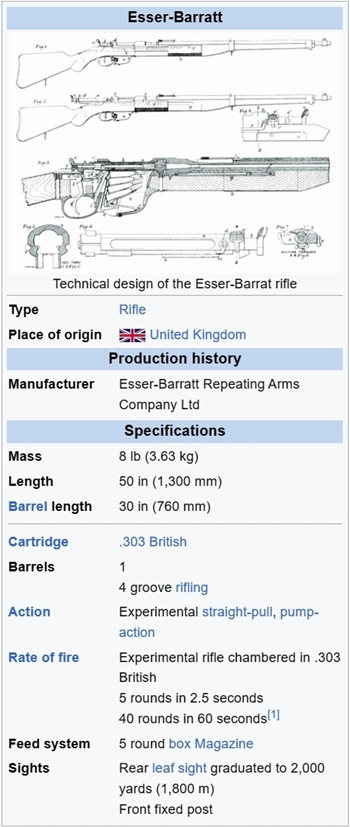Biography of the BARRATT Family
Newspaper reports
 Frank Barratt
Frank Barratt
 Edward William Barratt
Edward William Barratt
Biography of the BARRATT Family
 Frank Barratt
Frank Barratt
 Edward William Barratt
Edward William Barratt

|
  |
The Esser-Barratt rifles that were made were demonstrated at Bisley in 1906, and watched with interest by the Duke of Connaught. However, the rifle failed to elicit interest from the British Army. Esser-Barratt sponsored a challeneg cup at Bisley the following year. Each contestant had to fire as many rounds that they could in one minute, scoring points according to where they hit the target. The winner was Sergeant-Major Wallingford who was a champion shooter and he scored 34 points. Although only a few examples of the rifle exist today, there is no evidence that a proposed .22 caliber training rifle or a sporting shotgun were ever made. Esser and Barratt also designed a rather improbable crank-action repeating rifle, which was also unsuccessful.
|